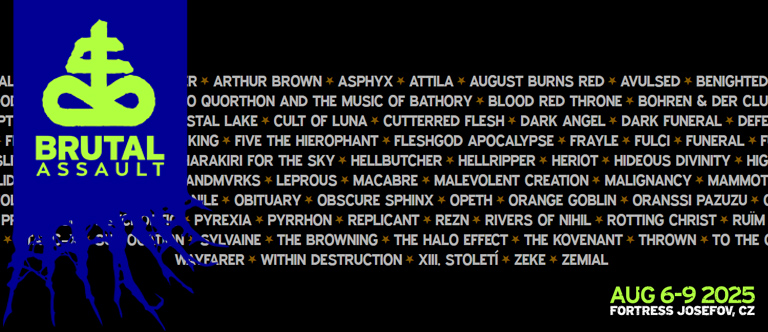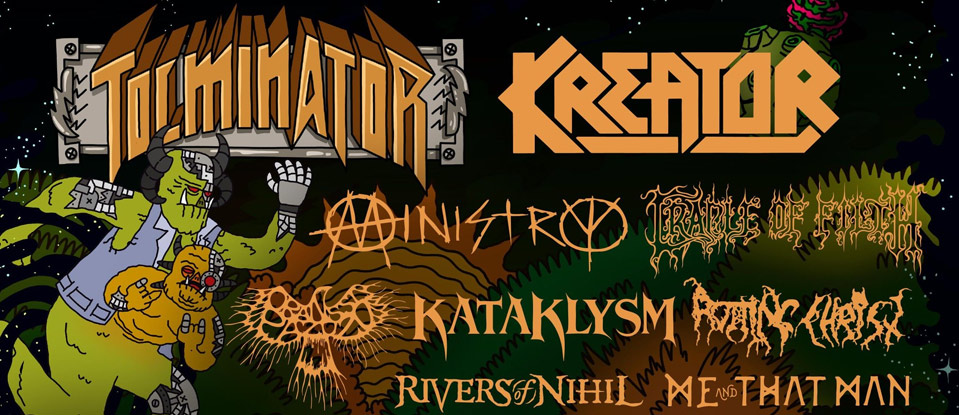Moussu T e lei Jovents, made up of the founder and singer of Massilia Sound System, Tatou (alias Moussu T, Mister T), and his guitarist, Blu, are now a major presence on the French music scene: an uncontested figurehead of Occitan music, the group is now making a name for itself beyond the frontiers of their homeland.
Over the thirty years of their encounter-rich career (Massilia was founded in 1984), they have connected with many people, notably those in the Nordeste region of Brazil and singers like Lénine, Silverio Pessoa and Jamilson Da Silva. From this, the group has drawn their inspiration and fundamental principles. The influence of Marseilles music from the thirties and the popularity of its light operas have also made a major contribution to building the group’s repertoire. And aside from these influences, Moussu T e lei Jovents have managed to come up with their own style, half-way between chanson and Mediterranean blues. Now recognised around the whole world, Moussu T e lei Jovents have come – like other world music groups – to represent the music of their home town.
Moussu T e lei Jovents work with almost the same team on their recordings as on stage: Tatou on vocals, Blu on guitars, banjo and vocals, Déli K on percussion and Denis Lo Bramaire on drums. For this occasion, the Brazilian percussionist, Jamilson Da Silva, with whom the group has worked since they started out, also accompanies them (here, he plays on the tracks ‘Le bateau’, ‘Monte vas cançoneta?’, ‘Mon drapeau rouge’ and ‘Embarcatz!’). For stage performances of their new repertoire, they will be joined for the first time by the bass player Fred Simbolotti (Raoul Petite, Royal de Luxe, IAM), for a show which will be, as always, full of good cheer but even livelier!
On this album, ‘Artémis’, which is their fifth, the influence of blues music stands out more than ever (cf. ‘Embarcatz!’, ‘Te’n vas de matin’, ‘Mistral’, ‘Lei rainards’, ‘Occitanie sur mer’ etc.), whether it’s in terms of the subjects the songs deal with (‘Tout mon temps’) or in terms of their structure. This never descends into a purely pedantic style, but instead calls on modal forms and open tuning, which is very common in blues music (particularly in the work of Led Zeppelin and the Rolling Stones). Moussu T e lei Jovents find their inspiration in many different sources, from Brazilian compositions (‘Le bateau’, ‘Mon drapeau rouge’) to Floyd-style pop forms which are borderline progressive, but they never leave the chanson style behind (cf. ‘Monte vas cançoneta?’). The prominence of the acoustic guitar on this album gives it a less electric feel than ’Putan de cançon’, their previous work, although it’s still definitely rock music!
There are more songs than ever in Occitan here, since it’s when they work in this language that the group feels the most independent. As in the past, they use a clever mix of light-heartedness and nostalgia, rebellion and powerful hints of poetry, always without the slightest ostentation. This time, it’s the goddess Artémis who serves as Moussu T e lei Jovents’ muse.
Artémis, the goddess of Phocaea and the guardian angel of Marseilles. She is both a symbol of the struggle for change and against exploitation, and the immutable image of motherhood and the sweetness of home life: an ambivalent sentiment which keeps cropping up in the group’s work as each song goes by. It is incidentally this same principle which was behind the work of Occitan troubadours in the Middle Ages (they composed love songs and poems dedicated to the ‘Lady’) and which can also be found in the work of more contemporary artists. Their repertoire subtly combines the mildness of the climate and ocean-side landscapes with the harshness of naval construction work and the smell of steel, and it all smacks of the fight for social justice. Once again, the group’s favourite topics (sometimes presented from a very ‘masculine’ point of view: war, steel, oil tankers) are expressed under the watchful eye of a protective female guide, Artémis, who follows logically on from the female figures on the group’s previous albums: a school crush in ‘Mademoiselle Marseille’, neighbourhood girls in ‘Forever Polida’ and the tomboy in ’Home Sweet Home’.
Argentine-Uruguayan Alt-Electrorock-Tango Band BAJOFONDO Releases Presente
Debut Album With Sony Masterworks
Featuring Academy Award-Winning Composer/Musician
Founder and Producer Gustavo Santaolalla
Available April 1st, 2013
SONY MASTERWORKS announces the release of Presente, the new album by Latin Grammy-winning band Bajofondo, available April 1st, 2013. The album’s title refers to what the band is at the present moment: a stirring mix of tango, milonga, folklore, rock, hip-hop, electronica, jazz, classical, and a world of sounds from the Río de la Plata, the river that separates and unites Argentina and Uruguay. One of the most acclaimed live acts in the world, Bajofondo’s Presente is also the biggest “present” (both in size and scope) the band has delivered to diehard fans and new converts: an epic 21-track high energy tour de force that blends a multitude of traditionally dichotomous genres seamlessly.
“After playing in virtually all corners of the world, having Sony Masterworks as our new home could not be more appropriate to present the album that most closely resembles what we are as a live band,” said Gustavo Santaolalla, Bajofondo’s decorated founder and producer (winner of a Golden Globe, 2 Oscars, 2 Grammys, and 12 Latin Grammys). “The music that comes out of the Río de la Plata has a distinctive accent but is universal. We could not have been in better hands.”
When Bajofondo began they came out swinging — the debut Bajofondo Tango Club album won a Latin Grammy for Best Pop Instrumental album in 2003. Then the group became a full-fledged band with the addition of Adrián Sosa (the drummer that gives BAJOFONDO’s rhythm its human traction) in the follow-up Mar Dulce (2007), which featured guests like Elvis Costello, Julieta Venegas, and Nelly Furtado, among others.
Presente is Bajofondo as you’ve never heard it before! Unlike previous efforts that dropped energetic dance floor bombs from the get-go, the new album opens on a low-key, string-based note: it’s the mysterious beginning of a brand new Bajofondo trip that takes the listener to the high-octane energy of its live shows and its ingenious experimentation in the studio. The production team of Santaolalla and guitarist Juan Campodónico have once again captured the common links and individual features of the music found on both sides of the river, but this time on a decidedly international approach that turned Presente into BAJOFONDO’s most ambitious album to date.
The lead single “Pide piso” is named after a rioplatense slang term literally referring to someone unpleasant who “asks for the floor” (to be knocked to the ground, that is), but it could also refer to somebody anxious to bring sparks to the dance floor. All the Bajofondo ingredients are in this song: the beat, the organic mix of modern electronica and old tango bandoneón and violins, the milonga piano, and the double entendre that flows throughout the album (another example of this is found in the powerful “Código de barra” that follows the contrasting, mellow intro and comes at you like a full-frontal sonic assault; the title simultaneously refers to a simple bar code and to figures of speech only understood by tango barflies or groups of friends).
“Olvidate” (“Forget it”) illustrates Bajofondo’s unique ability to blend sophistication with more mundane, popular cultural manifestations. It starts with a pulsating beat where disco meets bandoneón and then, when least expected, Bajofondo turns into a chorus taken straight out of an Argentine football stadium. The tongue-in-cheek bragging has Bajofondo boldly declaring that “even the dead” dance with them, with a bragadoccio that owes as much to hip-hop as it does to tango itself.
More than in any other album, Bajofondo’s own roster take a starring role in the vocal department. Santaolalla delivers a passionate version of “Pena en mi corazón” (“Sorrow in my heart); Campodónico (fresh off a Latin Grammy win in 2012 as producer of Uruguayan rock band El Cuarteto de Nos) leads on “Lluvia,” and Sosa debuts as a singer over a wicked bandoneón line in “Cuesta arriba.”
“Oigo Voces” Bajofondo’s first-ever a capella song, deserves its own paragraph. This gem is inspired by Argentina’s legendary neo-tango vocal group Buenos Aires 8, which in turn was inspired by France’s four-time Grammy-winning The Swingle Singers. But Santaolalla — who sang all the vocal parts himself and always had the Beatles and Brian Wilson as a source of great inspiration — took the style to a whole new level and the song became a Fab Four-meets-Beach Boys hybrid by way of Astor Piazzolla, the man who revolutionized tango.
After hundreds of dates throughout the world, Bajofondo has become a live music machine. It is a band made up of well-established artists in their own right. Besides the above-mentioned, Bajofondo is Martín Ferrés (the most visible exponent of the younger generations of Argentines taking up a complex instrument such as the bandoneón), Verónica Loza (the woman responsible for the film/video projections that are a key component of BAJOFONDO’s live performances), and Gabriel Casacuberta (a versatile bassist who has played anything from Hip-Hop to traditional Uruguayan folk. Javier Casalla’s contribution to the magic of BAJOFONDO has always been remarkable, and in Presente his extraordinary violin has a monster string section playing along with him, arranged and directed by Argentina’s renowned Alejandro Terán.
With 11 violins, 4 violas, 3 cellos, and 3 stand-up basses, Presente is the most string-based album in Bajofondo’s history. “This time we really worked on the orchestral parts,” said Santaolalla. “We had done something similar in Mar Dulce, but Presente is a much bigger project and the album required extra time spent in that area. We’re thrilled with the results.” Several album tracks also include brass, woodwinds, and percussion.
At this point in Bajofondo’s career, the band has long transcended “electrotango” to become one of the world’s most eclectic acts on record and one of the most irresistible on the dance floor, all wrapped with the energy and attitude of rock ’n’ roll.
“I think the most accurate description would be: Bajofondo makes Bajofondo music,” says Santaolalla. “And Presente is a trip that takes you from the most magical to the most epic urban moments.”







